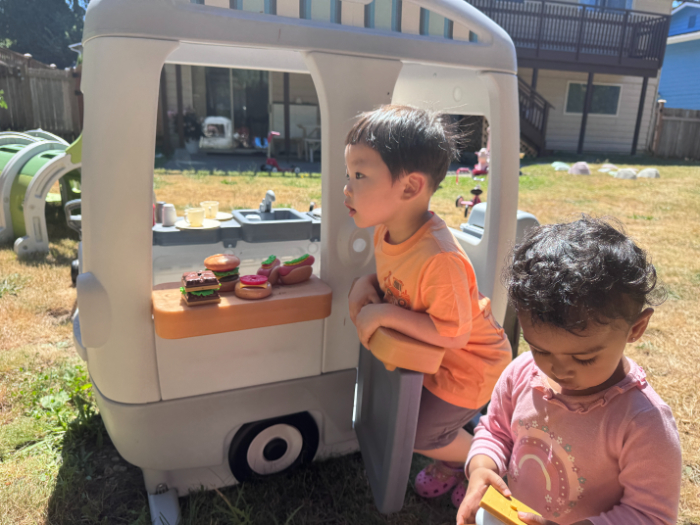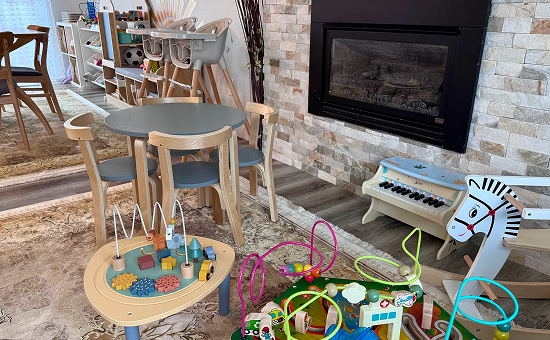Training caregivers for infant and toddler programs is vital for creating safe, nurturing environments in daycare and child care settings. This article explores essential skills like soothing techniques, safety protocols, and developmental support, alongside professional growth resources for early childhood staff. Whether in a daycare or home daycare, well-trained caregivers foster healthy development and build parent trust. Read on to discover expert techniques and resources for caregiver training.
Foundations of Caregiver Training for Infants and Toddlers
Why Caregiver Training Matters
Caregivers in infant and toddler programs play a pivotal role in shaping young children’s early experiences. Proper training ensures they provide safe, nurturing, and developmentally appropriate care in daycare and home daycare settings. Well-trained staff enhance child development, reduce risks, and build trust with parents, making training a cornerstone of quality child care.
The Unique Needs of Infants and Toddlers
Infants (0–12 months) and toddlers (1–3 years) have distinct developmental needs. Infants require constant attention, gentle handling, and sensory stimulation, while toddlers need support for emerging independence, language, and social skills. Training equips caregivers with specialized skills to meet these needs effectively.
Overview of Training Goals
The primary goals of caregiver training include ensuring child safety, mastering soothing and caregiving techniques, supporting developmental milestones, and fostering professional growth. These skills create a foundation for excellence in early childhood staff performance, particularly in daycare Bothell and child care Bothell settings.
Core Skills for Infant Caregiver Training
Soothing Techniques for Infants
Soothing is a critical skill for infant caregivers. Techniques like swaddling, gentle rocking, and using white noise help calm fussy babies and promote emotional security. For example, swaddling mimics the womb’s comfort, while rhythmic patting soothes during feedings. Caregivers should practice these methods to respond effectively to infant cues.
Feeding and Nutrition Best Practices
Safe feeding practices are essential in infant care. Caregivers must master proper bottle-feeding techniques, such as holding infants at a 45-degree angle to prevent ear infections. When introducing solids (around 6 months), they should follow pediatric guidelines, like starting with single-grain cereals, and accommodate dietary restrictions, ensuring safety in daycare settings.
Sleep Schedules and Safe Sleep Practices
Consistent sleep routines support infant health. Caregivers should follow safe sleep guidelines from the American Academy of Pediatrics (AAP), such as placing infants on their backs in a crib free of blankets or toys. Training emphasizes monitoring sleep patterns and creating calm environments to promote restful sleep.

Essential Toddler Childcare Skills
Managing Toddler Behavior
Toddlers are known for testing boundaries, making behavior management a key skill. Positive discipline techniques, like redirection and offering choices (e.g., “Do you want the red cup or blue cup?”), encourage cooperation. Caregivers should remain patient and consistent to foster self-regulation in toddler childcare programs.
Language and Social Development
Toddlers develop language and social skills rapidly. Caregivers can support this through activities like reading board books, singing songs, and facilitating peer play. For example, group activities like circle time in daycare settings encourage turn-taking and communication, laying the foundation for social confidence.
Encouraging Play-Based Learning
Play is a toddler’s primary learning tool. Structured activities, like building with blocks, and unstructured play, like exploring sensory bins, promote cognitive and motor development. Caregivers should design play-based activities that align with toddler interests, fostering creativity and problem-solving in child care environments.
Safety Protocols for Daycare and Home Daycare Settings
Childproofing Environments
A safe environment is non-negotiable in daycare and home daycare settings. Caregivers must ensure spaces are childproofed with secured furniture, covered outlets, and age-appropriate toys. Regular safety checks, like inspecting for small objects that pose choking hazards, are critical to infant and toddler safety.
Emergency Preparedness
Caregivers should be trained in first aid, CPR, and emergency evacuation procedures. For example, knowing how to respond to choking or allergic reactions can save lives. Daycare programs should conduct regular drills and maintain updated emergency contact lists to ensure preparedness.
Health and Hygiene Standards
Maintaining hygiene prevents illness in daycare settings. Caregivers must follow strict handwashing protocols, sanitize toys and surfaces daily, and use proper diapering techniques. Training should include recognizing signs of illness, like fever or rashes, to protect the health of infants and toddlers.

Supporting Developmental Milestones in Early Childhood
Tracking Infant Milestones
Infants reach milestones like rolling over (3–6 months), sitting up (6–9 months), and babbling (6–12 months). Caregivers can support these through tummy time, sensory toys, and verbal engagement. Tracking progress helps identify delays early, ensuring timely interventions in daycare programs.
Toddler Milestones and Activities
Toddlers achieve milestones like walking (12–18 months), speaking in short sentences (2–3 years), and self-feeding. Caregivers can encourage these through activities like obstacle courses for motor skills or simple puzzles for cognitive growth. Tailored activities in child care settings promote development.
Individualized Care Plans
Every child develops at their own pace. Caregivers should create individualized care plans based on observations and parent input. For example, a toddler struggling with speech may benefit from extra storytime. Training emphasizes flexibility to meet diverse needs in early childhood programs.
Professional Development for Early Childhood Staff
Ongoing Training and Certifications
Certifications like the Child Development Associate (CDA) credential enhance caregiver expertise. Training programs covering infant care, toddler behavior, and safety protocols are widely available online and through organizations like the National Association for the Education of Young Children (NAEYC). Continuous learning ensures high-quality care.
Staying Updated on Best Practices
Caregivers should stay informed through resources like early childhood journals, webinars, and conferences. For example, attending workshops on play-based learning or trauma-informed care keeps skills current. Subscribing to reputable sources ensures caregivers remain leaders in their field.
Building a Career in Child Care
Caregiving offers diverse career paths, from entry-level roles to daycare directors. Training programs can lead to advanced roles like preschool lead teacher or curriculum coordinator. Professional development fosters confidence and opens opportunities in daycare and home daycare settings.
Building Trust and Communication with Parents
Transparent Reporting
Daily reports on feeding, sleeping, and activities build parent trust. Caregivers should maintain detailed logs and share updates via apps or in-person discussions. Transparency reassures parents that their child is thriving in daycare or child care programs.
Involving Parents in Care Plans
Collaborating with parents ensures consistent care. Caregivers should ask about home routines, like bedtime habits, and incorporate them into daycare schedules. Regular meetings or surveys can align caregiving with family preferences, strengthening partnerships.
Handling Parental Concerns
Addressing concerns professionally maintains trust. Caregivers should listen actively, provide clear explanations, and offer solutions. For example, if a parent worries about a toddler’s eating habits, suggesting a feeding schedule can demonstrate expertise and care.
Conclusion: Boost Your Caregiving with Kidoheaven.com
Training caregivers for infant and toddler programs ensures safe, nurturing, and enriching care. Skilled caregivers master soothing techniques, safety protocols, and developmental support to help children thrive. In Bothell, Kidoheaven provides top-notch daycare Bothell and child care Bothell services, plus resources for caregiver professional development. Visit us to elevate your daycare or child care experience.
About Kidoheaven
At Kidoheaven, we provide exceptional daycare and child care in Bothell, specializing in inclusive environments for infants, toddlers, and preschoolers. Our trained caregivers create sensory-friendly spaces, implement individualized care plans, and partner with families to support children with special needs. Discover how we foster growth and inclusion at kidoheaven.com.
Why KidoHeaven Stands Out
✅ Licensed in Washington State
✅ Aligned with Early Achievers standards
✅ Working Connections subsidy accepted
✅ Daily updates via Brightwheel
✅ Located in Bothell, serving Mill Creek, Lynnwood & nearby areas
✅ Nutritious snacks, safe outdoor space, & positive mealtime routines
📞 Call 206-734-2040 to schedule a tour
🌐 Enroll now
Follow Our Mealtime Moments
Stay updated with more beautiful outdoor meals and daily learning routines on:
Instagram | Facebook | Nextdoor | Yelp | Winnie | YouTube | Upwards
FAQ
1. What qualifications are needed for infant and toddler caregivers?
Caregivers typically need a high school diploma, background checks, and training in CPR, first aid, and child development. Certifications like the CDA are highly valued in daycare settings.
2. How can caregivers ensure safety in a daycare setting?
Safety is ensured through childproofing, regular safety checks, and training in emergency procedures like CPR and evacuation drills.
3. What are the best soothing techniques for infants?
Swaddling, gentle rocking, and white noise are effective for calming infants, creating a sense of security in child care environments.
4. How can caregivers support toddler development?
Play-based learning, social activities like group games, and milestone tracking support toddler growth in cognitive, motor, and social skills.
5. Where can caregivers find professional development resources?
Online platforms like Coursera, NAEYC, and local workshops offer courses on infant care, toddler behavior, and caregiver professional development.



